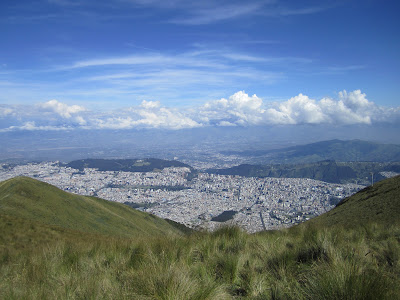The much awaited food post! Last weekend, a woman named Katia (the niece of my grandparents' Ecuadorian golfing friend, Pachi) was kind enough to invite me to her home in Southern Quito to shop for, prepare, and enjoy a typical Ecuadorian almuerzo (lunch). Here, breakfast is light (toast, cereal, etc.) and dinner is kind of a snack (una empenada, un sandwich) eaten around 8 or 9 PM. So lunch is the big guns. People eat a large, multi-course meal around 1 or 2 PM. Food here is hearty and very starch-heavy, made with the freshest ingredients imaginable.
la sopa: un locro de papa y espinaca - a potato, spinach, and cheese soup
Ecuadorians eat a bowl of soup, usually potato-based, nearly every day
el segundo/el plato principal: arroz, patacones, y pescado
the main course: rice, fried plantains, and fish
a typical segundo consists of starch (potato or rice), protein, and vegetable
el postre: dulce de higo con queso
dessert: figs in a sweet syrup made from natural sugar with cheese
A wide variety of delicious fruits are grown here in Ecuador.








































